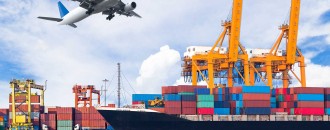
Why SAARC is growing in importance for India
Sisir Pradhan | @TheDollarBiz
After a gap of three years, the SAARC summit will be held in Kathmandu, the capital of Nepal. The two-day summit will start tomorrow and leaders of all eight member countries of the South Asian Association for Regional Cooperation (SAARC) are expected to take part to improve ties, regional integration and chart a way for future cooperation. India’s Prime Minister Narendra Modi, before leaving for Kathmandu today, said that the summit will focus on the theme of deeper regional integration for peace and prosperity. His government is emphasising on growth and investment in India’s manufacturing sector. In this regard, the new government also understands that the “Make in India” campaign also needs newer markets and expansion of existing markets. Hence, the Prime Minister is expected to push for improving trade ties among the SAARC member nations. The press announcement from the Prime Minister’s office stated that India has always emphasised the importance of greater regional integration at all levels for the socio-economic development of the South Asian region. Notably, the SAARC Summit, which has generally been convened at an interval of around 18 months, is being conducted after an interval of three years as the 17th SAARC Summit was held in 2011 in Addu City. Modi’s government blames the previous government for this gap and for allowing China to aid Sri Lanka in building infrastructure and increase its dominance in the SAARC region. There are reports that China, which has an observer status in SAARC, is keen to become a full-fledged member. During the last Summit, leaders of India, Nepal and Bangladesh had agreed to construct railway lines connecting the three countries and to convene Expert Group Meeting on the Motor Vehicles Agreement. It was also agreed that container train service will be started between the three countries. These moves are likely to get a boost in the 18th SAARC summit.
The Indian government during the Summit will stress on enhancing connectivity between India and other SAARC countries, most of which share borders with India. The Cabinet, chaired by the Prime Minister on November 20 had approved signing and ratifying the SAARC Regional Railways Agreement by India,  as a member State of SAARC. In terms of rail and road connectivity, SAARC region is considered as one of the least networked regions and it has lead to high costs and low volumes of trade. A study by the SAARC Regional Multi Modal Transport Study (SRMTS) in 2005, had recommended multilateral agreements permitting free movement of people, goods and services within SAARC region in the Road and Rail sector. Accordingly, the Regional Rail Agreement (RRA) was drafted by India for SAARC countries in 2008. The draft Agreement has been discussed in three meetings of the Expert Group on Regional Rail Agreement and in the meetings of Inter-Governmental Group on Transport (IGGT) and the text of the Agreement was finalised in the 5th IGGT held in New Delhi on 30th September, 2014.
as a member State of SAARC. In terms of rail and road connectivity, SAARC region is considered as one of the least networked regions and it has lead to high costs and low volumes of trade. A study by the SAARC Regional Multi Modal Transport Study (SRMTS) in 2005, had recommended multilateral agreements permitting free movement of people, goods and services within SAARC region in the Road and Rail sector. Accordingly, the Regional Rail Agreement (RRA) was drafted by India for SAARC countries in 2008. The draft Agreement has been discussed in three meetings of the Expert Group on Regional Rail Agreement and in the meetings of Inter-Governmental Group on Transport (IGGT) and the text of the Agreement was finalised in the 5th IGGT held in New Delhi on 30th September, 2014.
Provisional figures (Source - Ministry of Commerce, India)
Moreover, the Indian government has also approved the signing of a bilateral agreement for the regulation of passenger traffic between India and Nepal on the sidelines of the SAARC Summit in Kathmandu. The SAARC Motor Vehicles Agreement, which is proposed to be signed at SAARC Summit will allow vehicles of member states to ply for transportation of cargo and passengers. To begin the process, Nitin Gadkari, India's Minister for Road Transport & Highways and Shipping, flagged off Delhi-Kathmandu-Delhi bus service today. Though India’s exports to other SAARC member countries is just 6.4% of the country’s total exports, it is growing at an average 33.76% per annum which is much higher compared to India’s exports to EU countries which is growing at a around 1.2% per annum. Foreign trade experts opine that the slowdown of trade with Europe is due to the weak economic conditions in the region. They say that SAARC countries are important for India’s exports and surface connectivity among the SAARC member countries could boost trade and economic growth in the region significantly. Greater cooperation within SAARC is also likely to address energy concerns among member countries and ward off the Chinese for some time.
This post was published on November 25, 2014.






 to success.
to success.